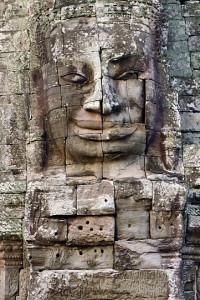The God-Kings of…
 Quick, think of a powerful ancient empire.
Quick, think of a powerful ancient empire.
Chances are, the Angkor empire ruling from what is present-day Cambodia is not the first one that came to mind. And yet, from the 9th to the 15th centuries, the Khmer ruled over the greatest empire that southeast Asia has ever seen. At its height, the capital city of Angkor was home to over a million people—compare that to the 50,000 or so that lived in London at the time.
The Khmers were ruled by a succession of self-proclaimed god-kings, or devarajas. And like god-kings everywhere, there was no shortage of architectural excess among many of these, each one vying to create the most impressive temple to the Hindu deities. In this, they largely succeeded.
Although Angkor Wat is the most famous of the Khmer temples (and considered to be the largest religious structure in the world), it is but one of dozens of breathtaking temples clustered around the Cambodian town of Siem Reap, each remarkable for its own unique style and design. Pure heaven for temple aficionados.
Although I am not one to get particularly excited about ruins, these were admittedly most impressive. Roving from temple to temple from a 5:30am sunrise to a 5:30pm sunset, I was actually sorry to see the last rays of daylight. From the massive scale of Angkor Wat to the intricate carvings of Banteay Srei to otherwordly heads of Bayon, each temple was more fascinating than the next.
My absolute favorite was Ta Prohm. Uninhabited for centuries, the jungle moved in to reclaim this temple, with enormous trees now crawling out of the rocks and through doorways, their roots wrapping around spires and cleaving through walls. It is at once a beautiful display of man’s architectural glory and of nature’s even greater power.
 Click to subscribe via RSS feed
Click to subscribe via RSS feed

Bayon Smile !